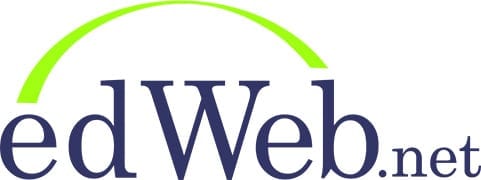How has your school built a positive culture around digital citizenship? How have you involved students, faculty, staff, leadership, and parents? You can build a positive school culture around digital citizenship, and involve all stakeholders.
Examine models that provide a meaningful common language to promote better understanding of your school programs.
In this webinar, presented by The Digital Educator community at edWeb.net, Tanya Avrith addressed a framework to get started with teaching digital citizenship in your class/school. Learn ideas on how you can begin to teach your students how to build their digital identities and become caring citizens of a connected world using social media and the web.
How do we guide kids to think critically, have moral sensitivity, and make ethical decisions in digital spaces? How do we help them think not only of themselves, but also about the impact of their actions in the digital world on others? Principles of character education intersect strongly with digital citizenship education.
How can a school district educate each and every student to be a safe, responsible, respectful digital citizen?
We’re proud to be in partnership with Common Sense Education to celebrate the Second Annual Digital Citizenship Week – October 19-25. Join us to shine a spotlight on the importance of helping kids learn how to create safe, responsible digital lives. Check out these resources and learn how Common Sense Education’s whole-community approach engages everyone… read more →
Teachers have hopes for young people to share their voices, connect, and learn with others in a global, digitally-mediated world. The challenges of digital spaces create opportunities for uncivil, hateful, or overall trivial and unsubstantial dialogue.
Are you getting frustrated as you try to bring 21st century tools and skills into classrooms at your school? Have you gotten stuck on how to encourage your colleagues and administrators to embrace the technology and skills necessary to prepare our students to be college bound and career ready? In this edWeb webinar hosted by the Digital Citizenship community, Jeff Downing, an Elementary Computer Specialist in Fremont USD, shared some valuable lessons he has learned over the past three years as he implemented a technology plan at his school site, including lessons learned from incorporating digital citizenship throughout the curricula.
Common Sense Education, the education arm of Common Sense, the national nonprofit helping parents, teachers, and students thrive with technology, is partnering with edWeb.net to present Digital Classroom: Teaching with Tech.
In this edWeb.net webinar hosted by the Essential Elements for Digital Learning community, Steve Garton, leader of the Maine Learning Technology Initiative program for a decade, showed us how to define your own success in a meaningful way through data, digital citizenship, and the national PTA standards. We also learned how to utilize these tools to reach out to parents, students, teachers, businesses, and taxpayers.

